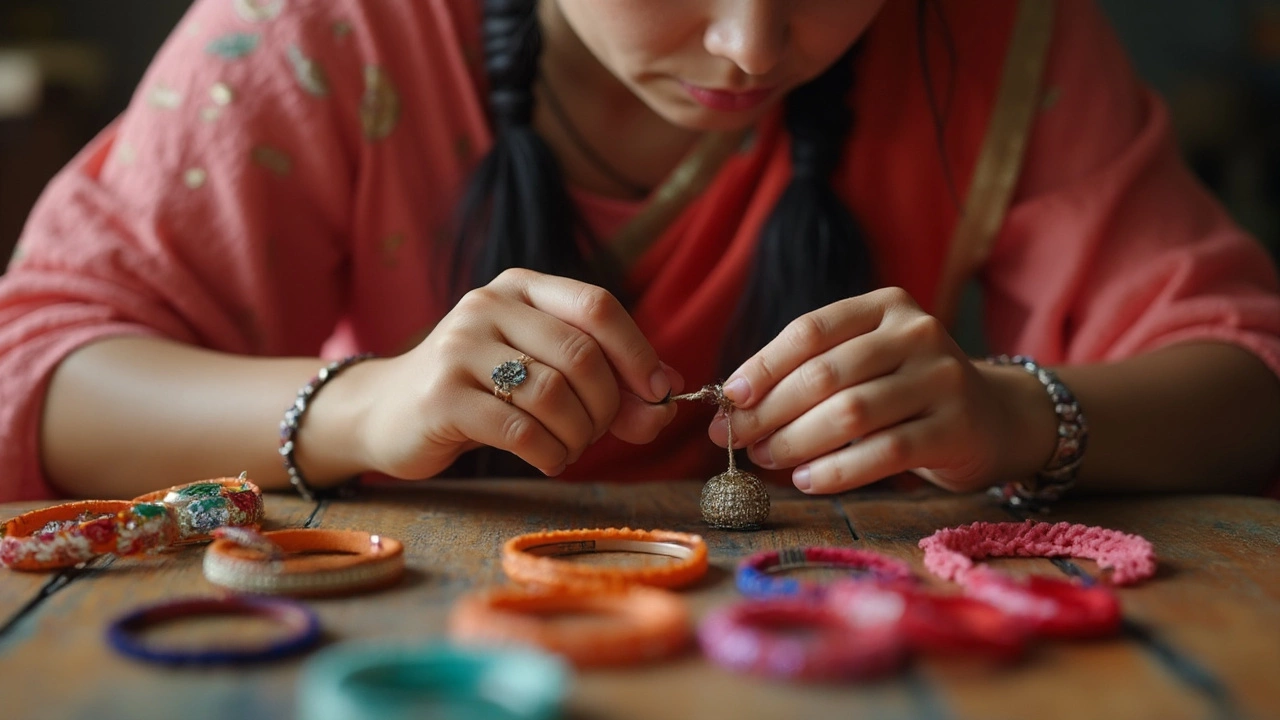Protection Tips for Your Jewellery and Traditions
Ever bought a piece that looked amazing but later turned out to be cheap plating? Or woke up with a sore wrist after sleeping with bangles on? You’re not alone. Protecting your jewellery doesn’t have to be complicated. Below are simple, real‑world steps you can start using right away.
Spotting Fake Jewellery Quickly
The first line of defence is knowing what to look for before you pay. Check for a hallmarked stamp – 875, 916, or 833 are common marks for gold and silver in India. If you see a magnet, it’s a red flag: genuine gold isn’t magnetic. Weigh the piece; solid gold feels heavier than plated versions of the same size. A quick acid test on a hidden spot can confirm purity, but only if you’re comfortable handling chemicals. When you shop online, ask the seller for clear close‑up photos of the hallmark and ask for a BIS certificate if it’s gold.
Another shortcut is the “water test.” Drop the jewellery into a bowl of water. If it sinks, it’s likely solid; if it floats or hovers, it could be hollow or heavily plated. Combine these checks and you’ll catch most fakes before they reach your jewellery box.
Keeping Bangles Safe While You Sleep
Many of us love the clink of bangles on our wrists, even at night. But sleeping with them can cause bruises, broken nails, or even break the bangles. The easiest fix is to store them in a soft pouch before bedtime. If you must wear them, choose flexible designs made from thin gold or alloy that won’t dig into skin.
Another practical tip is to slide a thin leather strip under the bangle. It creates a cushion and prevents metal‑to‑metal friction, reducing the risk of scratches on both the bangles and your skin. If you notice any swelling or soreness, give your wrist a break – the comfort is worth the short‑term style sacrifice.
Beyond bangles, protect all your pieces by keeping them away from harsh chemicals, humidity, and direct sunlight. A dry, airtight jewellery box lined with soft cloth is the ideal storage spot. For gold chains, lay them flat or hang them on a small hook to avoid tangles.
Regular maintenance also extends the life of your jewellery. A gentle polish with a soft cloth removes oil and restores shine. For deeper cleaning, soak gold in warm soapy water for a few minutes, rinse, and dry thoroughly. Avoid abrasive cleaners; they can wear down delicate settings.
Lastly, insurance can be a safety net for high‑value items. Many banks and specialised insurers offer jewellery policies that cover theft, loss, or damage. Keep receipts and photographs of each piece – they make claim filing much smoother.
By checking hallmarks, using simple tests, and storing items properly, you’ll guard your jewellery against fakes, damage, and wear. These habits cost almost nothing but add years of sparkle to your collection. Stay safe, stay stylish, and enjoy every piece you own.
Black Thread on Hindu Wrists: Real Reasons and Hidden Meanings
Ever wondered why black thread is wrapped around Hindu wrists, even when so many vibrant bangles exist? This article digs into the real reasons, from superstitions to surprising benefits. Discover the beliefs, rituals, and modern takes on this simple accessory. Get the untold facts and learn practical tips if you're curious or considering wearing one yourself. No jargon, just clear answers and relatable stories.
Understanding the Kirpan: Sikh Symbol of Protection and Duty
The Kirpan is a ceremonial dagger that holds deep significance in Sikhism, symbolizing the commitment to protect others and uphold righteousness. As one of the Five Ks mandated for initiated Sikhs, it reflects the values of courage and defense against injustice. This article explores the history, importance, and ceremonial duties attached to the Kirpan, providing a deeper understanding of its role in Sikh identity and practice.
Kirpan: The Sikh Commitment to Protect and Serve
The Kirpan is a ceremonial sword or dagger carried by Sikhs as part of their religious faith. It represents the duty to ensure justice, protect the innocent, and stand up against oppression, symbolizing both spiritual and temporal responsibilities. Understanding the Kirpan involves exploring its historical roots, significance in modern society, and the commitments it entails for those who wear it. This article delves into why the Kirpan remains a powerful symbol of the Sikh community’s dedication to protecting and serving others.
The Kirpan's Role in Sikh Commitment to Protection
The Kirpan, a ceremonial sword or dagger, is more than just a weapon for Sikhs—it's a profound symbol of their commitment to protect others. This sacred object embodies the duty of defending justice and those in need. For Sikhs, carrying the Kirpan is a practice deeply rooted in their religious beliefs, representing courage and respect for life. While it may raise questions in communities unfamiliar with it, understanding its significance sheds light on Sikh values.








